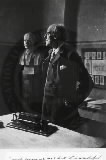
(1857-1936)
British Mathematician
Influences
- Student of: Galton
- Influenced by:
- Students: Wechsler
- Influenced:
- Time Period: The Great Schools’ Influence
Education
- King’s College, Cambridge
- Admitted to the bar at age 24 (1881)
Career
- In 1884 (age 27) he was appointed to the chair of Applied Mathematics at University College, London.
- In 1890 he was appointed Lecturer on Gemoetyr at Gresham College.
Major Contribution
Karl Pearson developed some of the central techniques of modern statistics. In the early 1900’s Pearson became interested in the work of Francis Galton, who wanted to find statistical relationships to explain how biological characteristics were passed down through generations. Pearson’s research laid much of the foundation for 20th-century statistics, defining the meanings of correlation, regression analysis, and standard deviation.
The ideas/principles: bi-serial _r_, chi-square, coefficient of contingency, coefficient of variation, correlation ration, kurtosis, moment ocefficient, multiple correlation, partial correlation, normal curve, product moment, scedasticity, standard deviation,
Ideas and Interests
Poetry, philosophy, history of religion, law, the theory of elasticity
Publication
- The Grammar of Science (1892)
- The Life, Letters and Labours of Francis Galton (1930?)
References: 15
Image Courtesy of the National Library of Medicine
